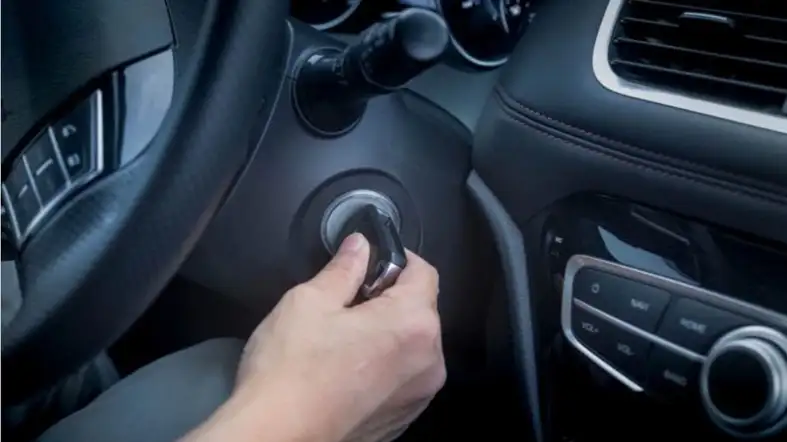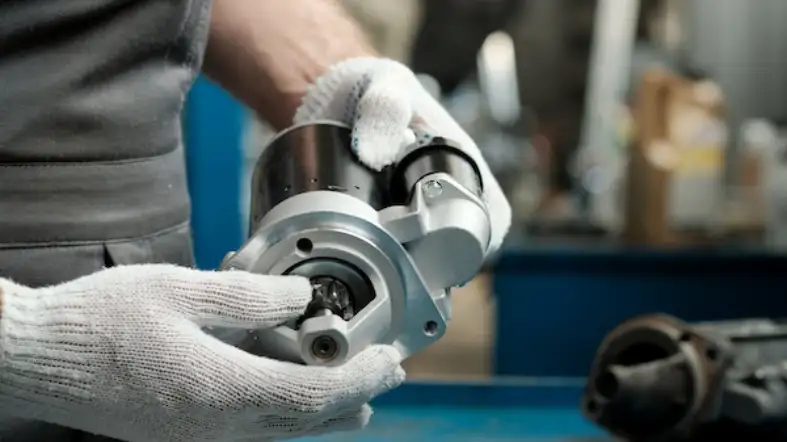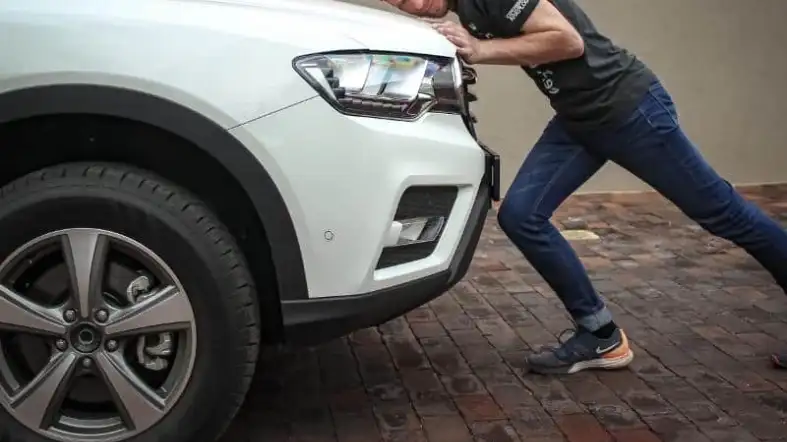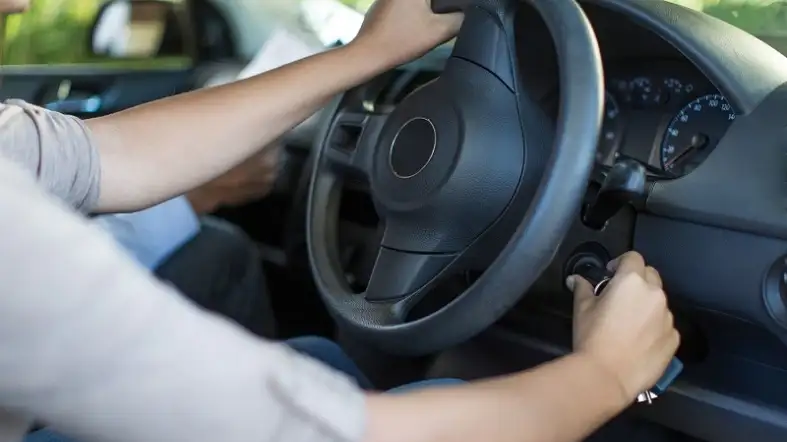Imagine it’s a beautiful day, the sun is shining, and you’re ready to hit the road. You hop into your car, put the key in the ignition, turn it…and nothing happens.
Your heart sinks as you realize your car’s starter is bad. But don’t worry, because, in this blog, we’re going to show you how to start an automatic car with a bad starter.
We’ll give you all the tips and tricks you need to get your car up and running again, so you can return to your day and leave your starter troubles behind.
Starting an automatic car with a bad starter
Starting an automatic car with a bad starter can be frustrating, but there are a few things you can try to get it running. Here are some tips to keep in mind:

1. Check the battery:
The first thing to do when experiencing difficulties starting your automatic car is to check the battery.
A weak or dead battery is a common cause of starting problems.
Before attempting any other solutions, ensure the battery is fully charged and in good condition.
You can use a voltmeter to measure the battery’s voltage; it should ideally read around 12.6 volts for a fully charged battery.
If the voltage is significantly lower, your battery might be the culprit.
2. Try tapping the starter:
If your battery is in good condition but the engine still doesn’t crank, the starter might be the issue.
In some cases, the starter motor’s internal components can get stuck or corroded, preventing it from engaging with the engine’s flywheel.
Tapping the starter with a hammer or a similar tool might help free up the stuck components and allow the starter to work temporarily.
However, keep in mind that this is a temporary fix, and the starter will likely need replacement or repair eventually.
3. Push start the car:
If tapping the starter doesn’t work, another option to get your car running is push-starting.
This method requires another person to help you.
With the ignition turned on, have your helper push the car while you sit inside and put the transmission in first or second gear (depending on the car).
When the car gains enough momentum, release the clutch pedal quickly.
This action will engage the engine, causing it to turn over and hopefully start.
Remember, this technique is only applicable to manual transmission cars, not automatics.
4. Use a starter fluid:
Using starter fluid is a method to ignite the engine without relying on the starter motor.
Starter fluid is a flammable aerosol spray that helps start internal combustion engines, even in cold weather or when the starter is malfunctioning.
To use a starter fluid, remove the air intake hose, usually connected to the air filter housing, and spray a small amount of starter fluid into the intake while someone tries to start the car.
The fluid’s flammable properties should ignite the fuel mixture and initiate the engine’s combustion process, allowing it to start.
5. Seek professional help:
If none of the DIY solutions work, it’s time to consult a professional mechanic or automotive technician.
They have the expertise and tools to diagnose the exact cause of the starting issue, whether it’s related to the starter motor, ignition system, or other components.
Attempting complex repairs without the necessary knowledge and tools may lead to further damage and costly repairs.
What are the Signs of a Bad Starter of an automatic car?

Here are the signs that could indicate a bad starter in an automatic car:
1. Grinding noise:
A grinding noise when starting the car is a clear indicator of a bad starter.
It occurs when the starter motor’s gear isn’t meshing properly with the flywheel’s teeth.
The flywheel is connected to the engine’s crankshaft, and when you turn the key, the starter gear should engage with the flywheel to crank the engine.
However, if the starter’s gear teeth are worn or damaged, they won’t mesh smoothly with the flywheel, resulting in a loud grinding sound.
2. Engine cranks slowly or not at all:
When you turn the key, the starter motor should spin rapidly, engaging the engine’s flywheel to start the car.
If the starter motor fails, it may struggle to spin the engine or not rotate at all.
This can be caused by various factors, including a weak battery that doesn’t provide enough power to the starter, a faulty starter motor that has worn-out internal components, or a bad starter solenoid that doesn’t properly energize the starter.
3. Clicking sound:
When you turn the key and hear a rapid clicking sound, it usually indicates a problem with the starter solenoid.
The starter solenoid is an electromagnetic switch that connects the battery to the starter motor when you turn the key.
If the solenoid is faulty or has a poor connection, it won’t allow the necessary current to flow to the starter motor, resulting in rapid clicking sounds without the engine cranking.
4. Dashboard lights dim:
If you notice the dashboard lights dimming significantly when attempting to start the car, it suggests that the starter motor is drawing excessive power from the battery.
This could be due to internal issues within the starter motor, such as worn-out coils or brushes.
It can also be a sign of a failing solenoid, causing the starter to draw more current than usual, which puts strain on the battery and the electrical system.
5. Smoke:
The presence of smoke or a burning smell when starting the car is a severe indication of an electrical problem, which could be related to the starter.
Smoke may arise from a short circuit within the starter motor, caused by damaged or frayed wires, or from excessive heat due to internal failures.
In any case, seeing or smelling smoke during the starting process is a sign that the car should not be driven, and immediate attention from a qualified mechanic is necessary.
6. Oil leaks:
If you notice oil leaking from the starter motor, it usually indicates that the starter is failing.
The starter motor is housed in the engine compartment and is exposed to engine oil.
Over time, the starter’s internal components, such as bearings or seals, can wear out, leading to oil leaks.
Oil contamination inside the starter can cause it to malfunction, affecting its ability to engage with the flywheel and start the engine reliably.
Alternative ways to start an automatic car with a bad start

If you’re having trouble starting your automatic car, there are several things you can try before giving up and calling a tow truck.
Here are a few alternative ways to start your car if you’re experiencing a bad start:
1. Check your battery:
If your battery is dead or low on charge, your car may struggle to start.
Before trying anything else, check to make sure your battery is in good condition and fully charged.
You can do this by using a battery tester or taking your car to a mechanic.
2. Jump-start your car:
If your battery is low on charge, you can jump-start your car with the help of another vehicle.
Park the two cars facing each other with their engines off and connect the red jumper cable to the positive terminal of the dead battery and the other end to the positive terminal of the working battery.
Then, connect the black jumper cable to the negative terminal of the working battery and the other end to an unpainted metal surface on the engine block of the dead car.
Start the working car and let it run for a few minutes, then try to start the dead car.
3. Use a battery charger:
If you have access to a battery charger, you can use it to charge your dead battery.
Simply connect the charger to your battery and let it charge for a few hours or overnight. Once the battery is fully charged, try to start your car.
4. Check your starter:
If your battery is in good condition and fully charged, but your car still won’t start, you may have a problem with your starter.
You can try tapping on the starter with a wrench or hammer to see if that helps. If not, you may need to replace the starter.
5. Check your fuel system:
If your car is turning over but not starting, you may have a problem with your fuel system.
Check to make sure you have enough gas in the tank and that the fuel pump is working properly.
You can also try spraying some starter fluid into the air intake to see if that helps.
How can I prevent my car starter from going bad in the future?

Maintaining your car’s electrical system is important for preventing future starter issues. Here are some tips to help you keep your car running smoothly:
1. Keep your battery clean:
Regularly check your battery terminals and remove any corrosion or buildup. This will ensure a good connection and prevent any electrical problems.
2. Check your battery’s charge:
You should have your battery tested regularly to ensure it is holding a charge. A weak battery can cause problems starting your car.
3. Inspect your alternator:
Your car’s alternator charges the battery while you drive. If it fails, your battery can lose its charge and your car won’t start. Inspect the alternator for any signs of wear or damage.
4. Check your starter motor:
The starter motor is responsible for cranking the engine. If it fails, your car won’t start. Look for any signs of wear or damage and have it inspected by a mechanic if necessary.
5. Keep an eye out for warning signs:
If you notice any warning signs such as dimming headlights, slow cranking, or clicking noises when you turn the key, it may be a sign that your electrical system needs attention.
6. Replace old or worn-out components:
Over time, electrical components can wear out or become damaged. Replace any components that show signs of wear or damage to prevent future starter issues.
7. Follow your car’s maintenance schedule:
Regular maintenance is important for keeping your car running smoothly.
Follow your car’s maintenance schedule to ensure that your electrical system is inspected and serviced regularly.
FAQs
Q. Can I Start An Automatic Car With A Bad Starter?
A: Yes, it is possible to start an automatic car with a bad starter, but it may require some extra effort and precautions.
Q. How Can I Start An Automatic Car With A Bad Starter?
A: One method is to try jumpstarting the car using jumper cables and another vehicle.
You can also try push-starting the car if you have a manual transmission, or using a remote starter if you have one installed.
Q. Is It Safe To Start An Automatic Car With A Bad Starter?
A: While it is possible to start a car with a bad starter, it’s not recommended as it can be dangerous and cause further damage to your vehicle.
Always take precautions and seek professional help if necessary.
Q. Can A Bad Starter Drain My Car Battery?
A: Yes, a bad starter can drain your car battery over time.
If you’re experiencing battery issues, it’s worth checking the condition of your starter as well.
Q. Should I Try To Fix My Bad Starter Myself?
A: While it’s possible to fix a bad starter yourself, it’s not recommended unless you have experience and knowledge in car repair.
It’s best to seek professional help to avoid causing further damage to your car.
Q. How Much Does It Cost To Replace A Bad Starter?
A: The cost of replacing a bad starter can vary depending on the make and model of your car and the location of the repair shop.
It’s best to get a quote from a trusted mechanic before proceeding with any repairs.
Conclusion
Starting an automatic car with a bad starter can be a frustrating experience, but there are a few tricks you can try to get your car up and running.
Firstly, make sure your battery is fully charged and the terminals are clean. Next, try tapping the starter gently with a hammer or metal rod.
If that doesn’t work, try rocking the car back and forth in gear to move the engine slightly, then try starting again.
If all else fails, you may need to have your starter repaired or replaced. Remember to always prioritize safety and don’t hesitate to call for professional help if needed.
